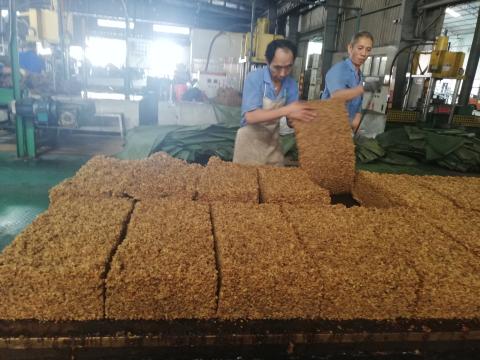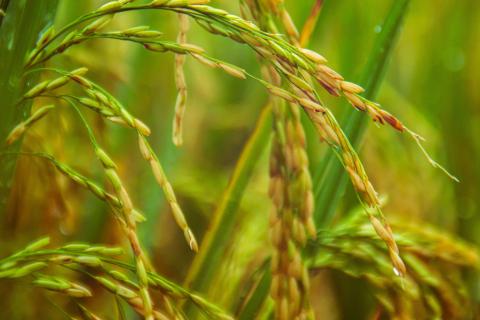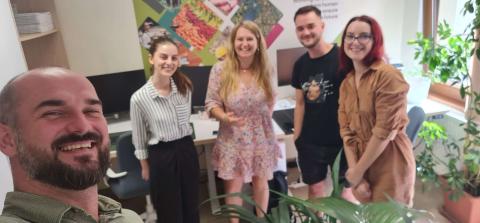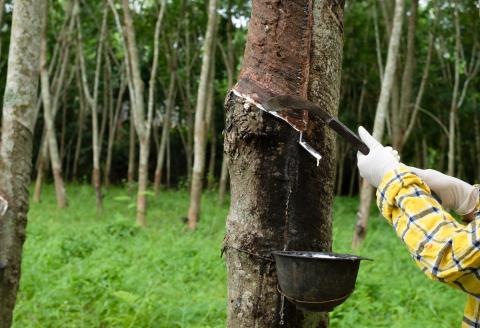Why is sustainability required in the rubber industry?
Natural rubber is a widely used commodity found in countless essential products. Since rubber is a renewable resource, it is becoming increasingly important to produce and process sustainably due to rising global demand.
The rubber industry is an important resource-based sector globally. It has witnessed steady and strong growth over the years. The future and present of the rubber industry are tied to the global economy because rubber is used so often in tyres and non-tire applications.
Rubber is used in a wide variety of products including medical equipment, surgical gloves, airplane and car tyres, clothing, toys, footwear, crap tubes, adhesives, hoses, gaskets, and roll coverings, and so on. One of the most important trends in the rubber market is the increasing demand from the automotive industry.
According to Verified Market Research, the size of the global industrial rubber market was USD 31.40 billion in 2021 and is expected to reach USD 46.66 billion by 2030. It is growing at a compound annual growth rate (CAGR) of 4.51% from 2022 to 2030. However, the overall contribution of the sector to the global economy is very promising. Some studies highlighted that this sector generates over USD 300 billion a year and supports 40 million people including their families through direct and indirect employment.
The expansion of rubber plantations, however, has some negative social and environmental impacts such as deforestation or conversion of natural forests, pollution, the displacement of local communities, unsustainable pricing, the use of child labour, and gender inequality.
A transformation is needed for the rubber industry
Rubber is produced in small and large-scale production systems. More than 85% of rubber comes from the unorganised sector, which is mostly made up of small-scale farms or smallholder rubber producers.
As per the study conducted in 2016, the rubber industry has a lot of issues with social, economic, and environmental sustainability. These issues mostly have to do with smallholders' livelihoods, unsafe working conditions, a lack of safety standards, inadequate use of toxic chemicals, discrimination and pay disparities caused by gender inequality, long working hours, child exploitation, and problems with migrant workers.
Because of this, the industry faces several challenges, such as high input costs for maintaining rubber estates and making high-quality rubber, a lack of skilled workers, and higher wages because the sheeting, drying, pressing, and refining processes take longer.
Besides that, smallholders or rubber trappers also encounter several other issues, such as high production costs that are a direct result of the extensive use of chemical inputs such as fertilisers, pesticides, and water. Due to the high input costs, they are often forced to charge prices that are not competitive. This makes it more expensive to produce and process field latex after harvesting.
The latex processing industry is a major contributor to pollution and has negative health effects on the smallholder population. Further, they also lack the financial resources to purchase the necessary safety and personal protective equipment (PPE) that would allow them to work in a harm-free environment.
As companies are held more and more accountable for their whole supply chain, these issues, if not addressed, pose serious risks to their reputation and supply chain security.
Human and labour rights violations, as well as deforestation and land grabbing, have seen to be linked to the production of natural rubber.
The rubber industry, however, can and should function without resorting to the destruction of the natural environment. If managed properly, rubber production can decrease deforestation and its associated carbon dioxide emissions while simultaneously boosting biodiversity and carbon sequestration. Additionally, it can prevent land grabs and violations of workers' rights.
The bottleneck
To reduce environmental and social risks, rubber producers and buyers need to work together to make sure that rubber production is sustainable. To make rubber less harmful to the environment and socially beneficial, rubber producers and buyers need to meet certain sustainability criteria.
However, smallholders often find it hard to meet these sustainability criteria by getting certified because of a lack of information about the processes, an inability to pay high costs for the services, and a general lack of understanding of the importance & benefits of getting certified.
As per the report Consumption Linkage for Natural Rubber from Smallholders: Current Status and Policy Aspects (April 2021), despite the extensive involvement of smallholders in the rubber industry, there is a lack of data and information on the supply chain of natural rubber.
Furthermore, the leading certification systems are not particularly accommodating to the rubber industry due to their stringent rules and regulations. The result is that it is not easy for many rubber operations and producers to follow several detailed steps and processes.
"Since the rubber sector is unorganised, mainly dominated by smallholders, traceability is the biggest challenge in this sector. Collaboration with smallholders is important in ensuring the inclusion of smallholders into certification schemes”, said Phuc Xuan To, Senior Policy Analyst at Forest Trends.
Phuc also pointed out an example of Vietnam - the world's third-largest producer. Currently, Vietnam has approximately 932,000 ha of rubber, of which the smallholder area accounts for more than 51%. The remaining area is owned by state and private rubber companies, almost 40% and 9.5%, respectively.
"Vietnam’s rubber supply chains are complex, triggered by different sources (e.g., imports, smallholders, companies), multiple actors participating in the chains, and a limited level of control regarding their legality and quality. This makes traceability the biggest challenge in this sector", he added.
The road to sustainability
As a large share of natural rubber is grown by millions of smallholder farmers, sustainability issues are difficult to address. To make it easier to address this challenge and meet the demand for verification of sustainable land-use practices, Preferred by Nature has developed an adaptation of the Sustainability Framework for the rubber industry. The Framework includes 28 sustainability criteria and takes a holistic approach to address sustainability challenges for various commodities, including rubber, on multiple levels.
The Framework covers all the key sustainability issues, from child labour, pesticides, and living wages, to deforestation, climate change, and gender equity. Using the Framework as the guidelines, businesses of any size or even smallholders, and landowners can implement sustainable business practices. This tool can be used for commodities all over the world. It works as a universal framework that can be customised for each commodity, allowing for more focused and relevant use.
The Framework has huge potential to define deforestation-free rubber markets. It provides a mechanism for companies to actively participate in improving their processes and chart a course for the future, including a path toward standard compliance. The Framework adds new dimensions, like the climate and greenhouse gas (GHG) emissions and makes it easier for businesses to investigate certain legal parts in more depth.
The Framework has been updated to match the newly approved EU regulation on deforestation-free supply chains. This means that companies that want to meet these requirements can use the Framework as a benchmark or guidance for their due diligence system.
Preferred by Nature is committed to protecting natural resources and supporting responsible trade of climate and forest impact commodities. The organisation is also an active member of the Global Platform for Sustainable Natural Rubber (GPSNR).
Setting an example
Kelani Valley Plantations PLC (KVPL), a Sri Lankan Tea and Rubber Plantations Company, has led by example by verifying its operations against the Framework and earning the first-ever Sustainability Framework Certificate.
KVPL is committed to being a leader in the sustainable rubber industry, and the certification received from Preferred by Nature is a significant step in that direction.
"At Preferred by Nature, we are committed to preserving our natural resources, protecting the environment, and helping local communities. The fast growth of the rubber market calls for a plan to use rubber as a natural resource efficiently and carefully and to improve how it is grown”, said Indu Bikal Sapkota, Senior Forestry Expert.
“The Sustainability Framework can be a game changer for rubber producers and buyers if used properly”, he added.
The article was first published at Agrigate Global.



